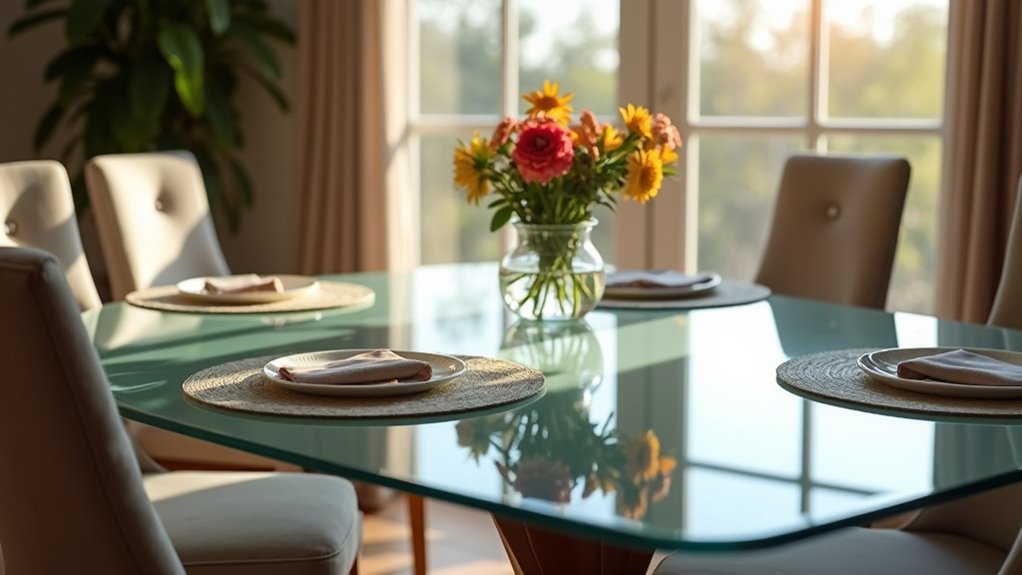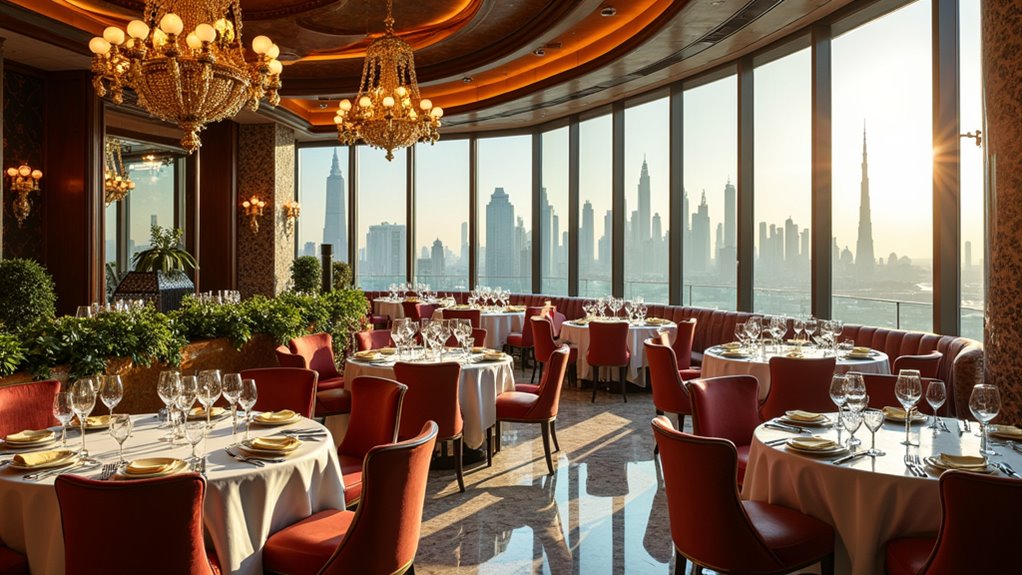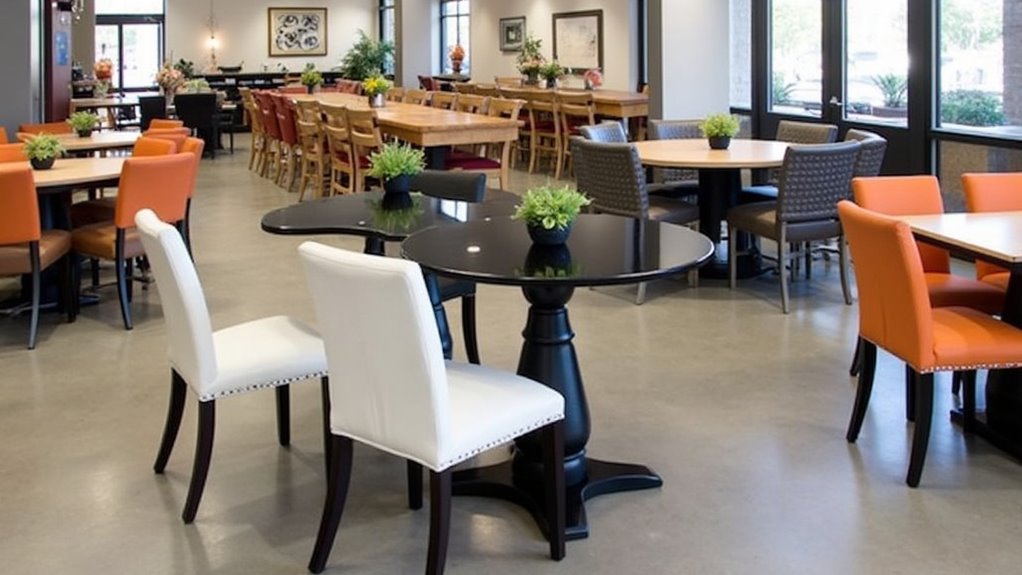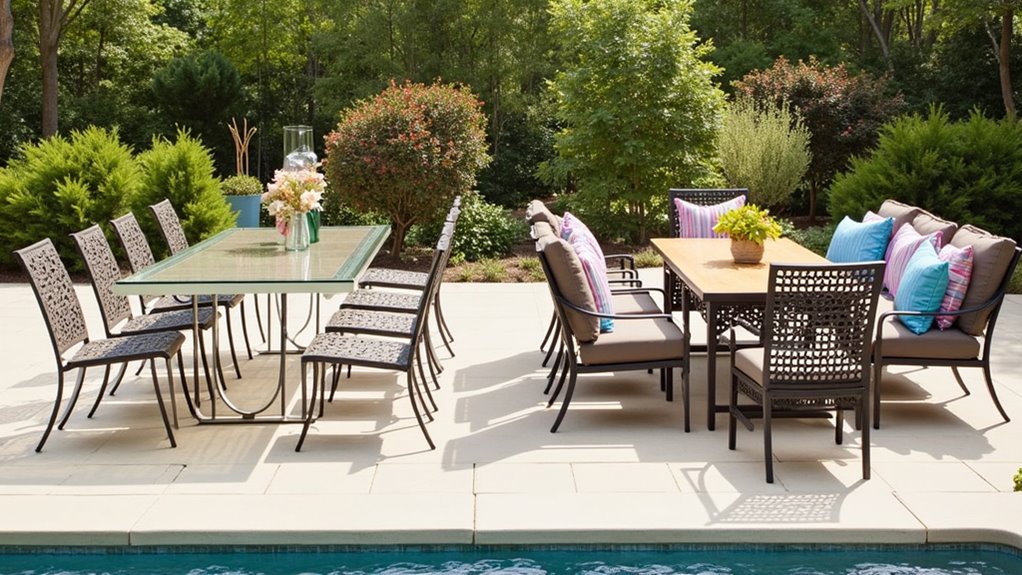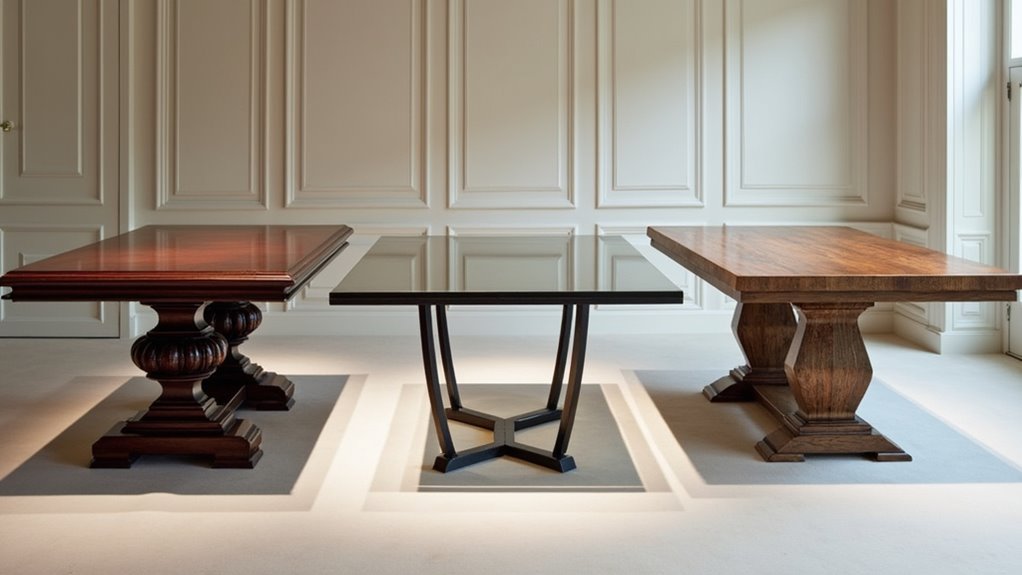To keep glass dining tables safe for daily use, select tempered glass with a thickness of 8mm to 12mm. Position tables with at least 24 inches of clearance from walls and away from high-traffic areas. Use microfiber cloths for regular cleaning and apply protective accessories like clear table protectors and silicone guards to prevent scratches and spills. Handle the glass carefully, inspecting regularly for damages. There are more effective strategies to enhance safety and longevity available.
Key Takeaways
- Use clear plastic table protectors to guard against spills and scratches, enhancing the table’s longevity.
- Apply silicone guards on sharp edges to reduce injury risk for children and pets.
- Position tables away from high-traffic areas to minimize the risk of accidents.
- Regularly inspect for chips or cracks and address minor damages promptly to maintain safety.
- Use coasters and mats to protect the glass surface from heat and moisture damage.
Selecting the Right Glass for Your Dining Table
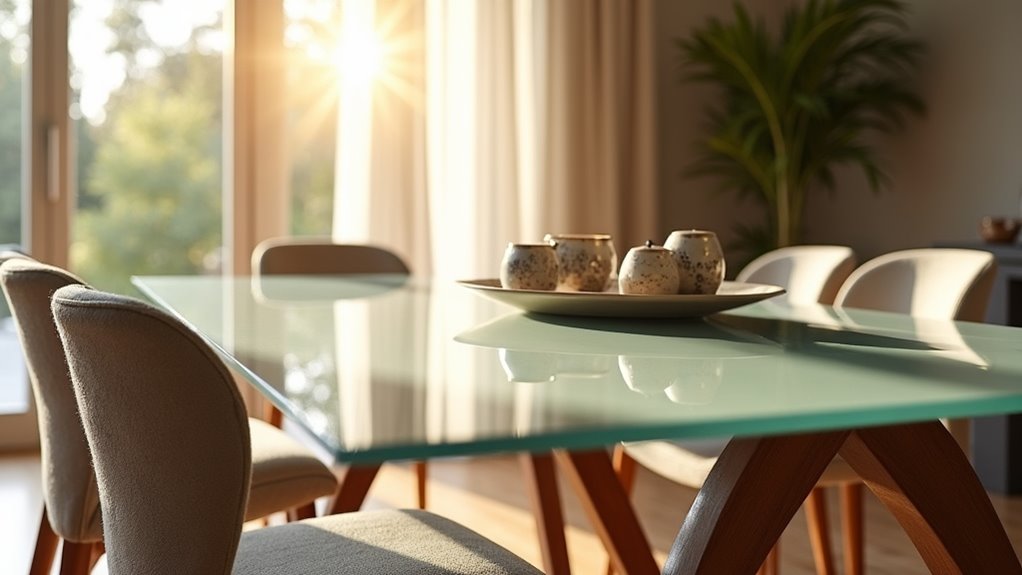
When selecting the right glass for a dining table, it is essential to consider not only the aesthetic appeal but also the functional attributes of the glass.
Tempered glass is often favored for its superior strength and safety features, with thickness typically ranging from 8mm to 12mm. A thicker glass top enhances durability, providing a substantial feel while reducing the risk of scratches. Additionally, various tint options, including clear, frosted, and crackled finishes, allow for versatile styling and light diffusion. The durability and longevity of glass surfaces also support heavier items effectively. To enhance the look of your dining area, opt for a table design that integrates metallic accents, which can elevate the overall aesthetic of the space.
Careful selection of glass, combined with appropriate thickness and finish, ensures a balance of beauty and functionality, making the dining table a safe and elegant centerpiece for any home.
Optimal Placement and Usage Tips
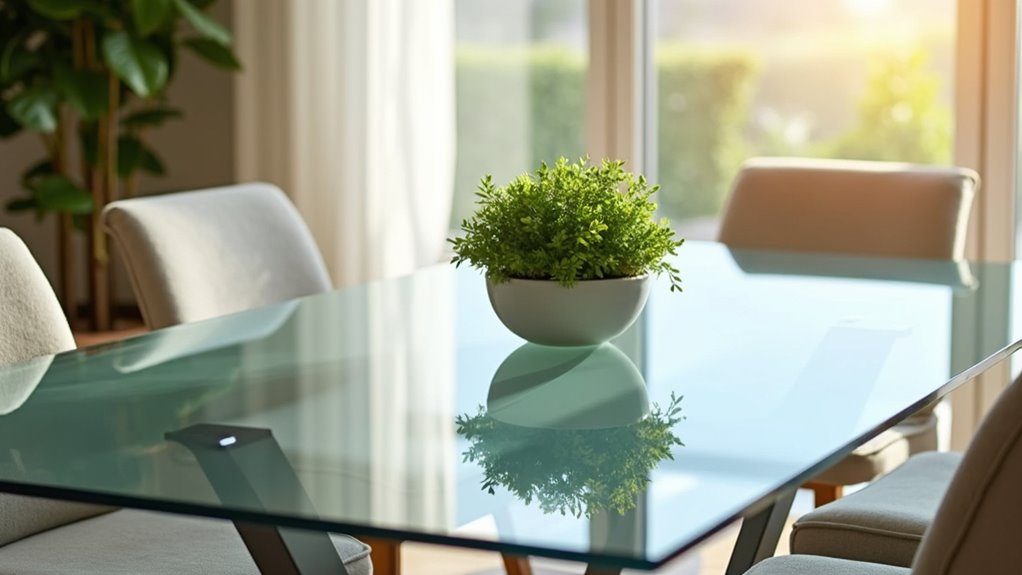
Choosing the right glass for a dining table sets the foundation for both beauty and safety, but the placement and usage of the table play a significant role in enhancing its functionality.
Proper table positioning ensures at least 24 inches of clearance from walls and furniture, allowing for comfortable movement flow and ease of chair access. Tables should be placed near windows to reflect natural light, while avoiding poorly lit corners. They must also be situated away from high-traffic areas to minimize accident risks.
Opt for round or oval shapes with soft edges in confined spaces. Thoughtfully placed complementary furniture, like contrasting chairs, maintains an elegant aesthetic without overcrowding, preserving the open ambiance that glass tables uniquely provide.
Cleaning and Maintenance Best Practices

Elegance and functionality converge in the maintenance of glass dining tables, where proper cleaning practices are essential for preserving their pristine appearance.
A consistent cleaning frequency should be integrated into the maintenance routine to avoid dust and grime buildup.
Key best practices include:
- Use a damp microfiber cloth in circular motions for dust removal.
- Apply glass cleaner evenly and rinse using lukewarm water with a damp cloth.
- Dry the glass with newspaper to achieve a streak-free finish.
- For persistent stains, use a vinegar and water solution for effective cleaning.
Essential Protection Accessories

Numerous essential protection accessories are available to extend the life and aesthetic appeal of glass dining tables.
Protective mats, such as clear plastic table protectors, act as barriers against spills and scratches while maintaining the table’s visibility. Silicone guards, installed on table corners, provide cushioning to sharp edges, reducing the risk of injury and chipping.
Additionally, custom glass table tops, cut to specific dimensions, offer enhanced durability and protect underlying surfaces. Felt pads beneath table legs can prevent floor scratches and slippage, while adhesive bumpers minimize contact stress between surfaces. It’s also wise to consider incorporating sintered stone options for their impressive durability and heat resistance as a stylish alternative to glass.
These accessories not only enhance functionality but also preserve the table’s beauty, ensuring it remains an elegant focal point in any dining space.
Safe Handling and Repair Techniques
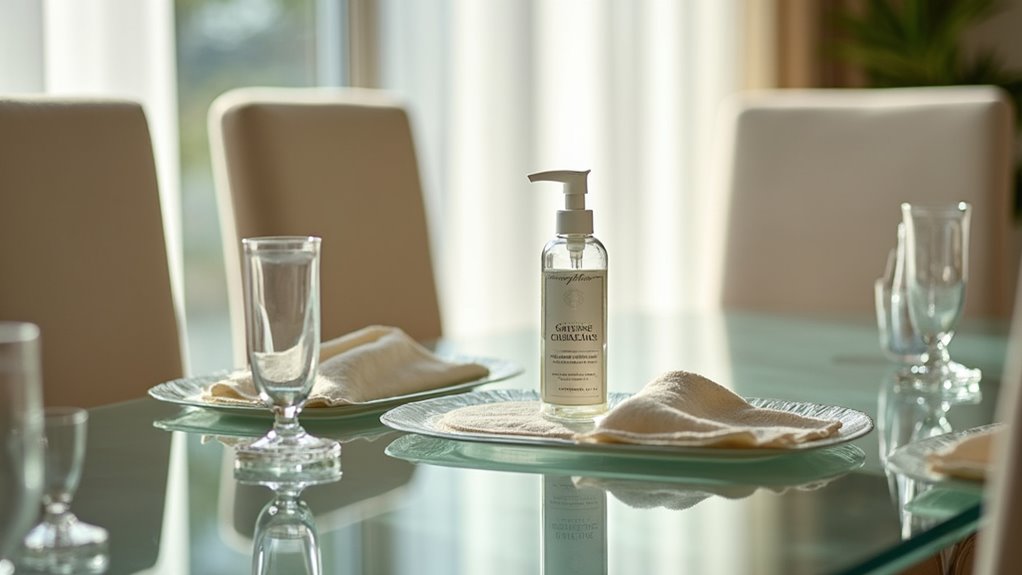
Ensuring the safe handling and repair of glass dining tables requires a meticulous approach to prevent damage and maintain their aesthetic appeal.
Ensuring safe handling and repair of glass dining tables is crucial for preventing damage and preserving their beauty.
Adopting the following practices can effectively enhance safety:
- Proper lifting techniques, such as using two hands and lifting from the bottom, should be employed.
- Implement regular inspections to identify any chips, cracks, or loose fittings, allowing for timely emergency repairs.
- Utilize protective accessories like coasters and mats to shield the surface from heat and scratches.
- Address minor damages immediately with specialized glass repair kits to prevent further issues and maintain visual integrity.
Articles on the same topic:
-
Top 10 Dining Tables in Dubai for All Styles
-
7 Best Commercial Dining Tables and Chairs for Your Business
-
Top 3 Best Selling Dining Tables for 2025
-
Top 3 Brown Jordan Dining Tables for Your Outdoor Area
-
7 Stunning Rustic Log Dining Room Tables for Your Home
-
Top 3 Lexington Furniture Dining Tables for Your Home

